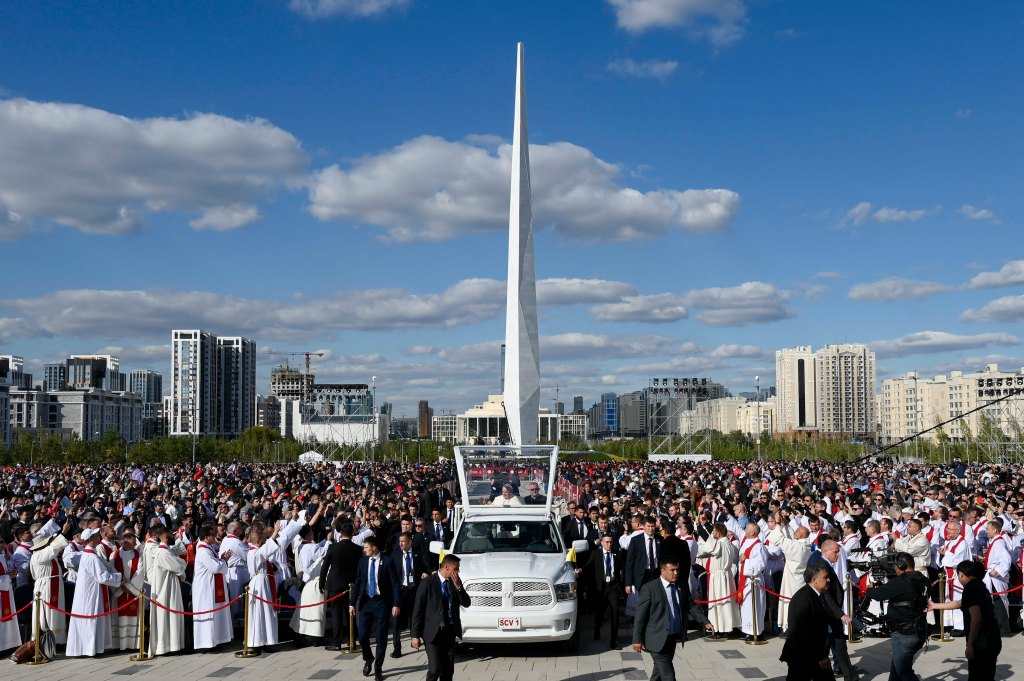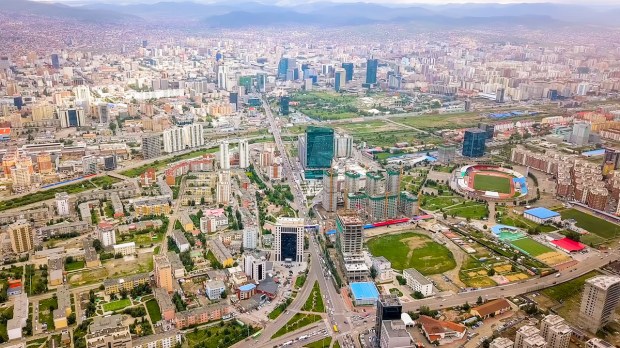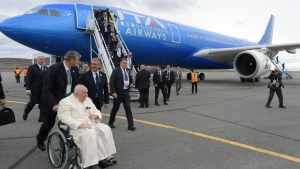From August 31 to September 4, 2023, Pope Francis will make the first ever papal visit to Mongolia. The Pontiff intends first and foremost to address the Mongolian people and the small local Catholic community. However, his trip to the land of the Khans, a former socialist republic landlocked between Russia and China, also appears to be a strategic move for the Holy See.
The legacy of John Paul II and Communism
Since the fall of the Berlin Wall and the independence of the socialist blocs, one of the main thrusts of Vatican diplomacy has been to try and make its voice heard in this vast expanse stretching from the Balkans to Southeast Asia. The aim: to support the existing communities who have suffered persecution, and to encourage mission and evangelization.
The legacy of John Paul II, seen by many as one of the architects of the fall of the Communist world, has made many former socialist republics wary of the Catholic presence on their territory. This is notably the case in Russia — where no pope has ever been able to visit — and in China — where the Church is under the oversight of a Patriotic Association loyal to the Chinese Communist Party. It is also the case, to varying degrees, in Kazakhstan, Vietnam, Laos, and Mongolia.

However, the latter has recently shown itself open to establishing new relations with the Holy See, as witnessed by the Pope’s upcoming visit. A similar case is Kazakhstan, which Pope Francis visited last September. In these two countries, both bordering Russia and China, the governments have shown a willingness to relax their control of the local Churches — without, however, granting total freedom to missionaries and local priests.
Diplomacy on the peripheries
The Holy See’s diplomacy in this type of country appears to be “peripheral,” to use a term dear to Pope Francis. By going to the borders of China and Russia, the Pope is trying to assure them that he is capable of integrating Asian cultural challenges, and that he is not — as is feared in Beijing and Moscow — the “chaplain of the West.” Good relations with Mongolia, Kazakhstan, and Vietnam, which are closely linked to their large neighbors, could serve as a model for future rapprochement with the latter.
With Russia, this has been particularly evident since 2022 and the outbreak of war in Ukraine. On the return flight from his trip to Kazakhstan, Pope Francis declared that closing the door to dialogue with Russia was tantamount to closing “the only reasonable door to peace.” His diplomacy continues to defend this line of action, as witnessed by Cardinal Matteo Maria Zuppi’s recent mission to Moscow.
Although Russia is less present in Mongolia than China, it is enjoying renewed affection among the population, according to a missionary who spent ten years there. Ulaanbaator could therefore be a valuable intermediary for discussions with Moscow.
A complicated relationship with China
With China, the Vatican’s difficulties seem even greater. The historic agreement on the appointment of bishops, reached between the two parties in 2018, has so far not really borne fruit. China has continued to act without consulting the Holy See. During his previous trip to Kazakhstan, the Pontiff tried in vain to meet Xi Jinping, who happened to be passing through Astana at the same time as him. In Mongolia, the Pope will continue his journey along the Silk Road, and attempt to take another step towards Beijing.
Mongolia has long been regarded by the Holy See as the Church’s gateway to China. In a speech given on the occasion of the Jubilee Year 2000, Cardinal Jozef Tomko, in charge of the missions, welcomed the first baptisms celebrated in Mongolia. Immediately afterwards he declared, “…and at the same time, we are waiting for the hour of the great China.” Today, this door is ajar for priests, despite the stringent controls imposed by Chinese customs.
The “rosary of pearls”
In Mongolia, the Holy See seems to be laying a new stone in a sort of encirclement of China. This is a “rosary of pearls” strategy, in reference to China’s “string of pearls” strategy in Southeast Asia and the Indian Ocean.
This “rosary of pearls” is made up primarily of the region’s traditional Catholic hubs of Taiwan and Hong Kong, where Cardinal-designate Stephen Sau-yan Chow is a key intermediary with Beijing. However, the former British enclave and the small republic of Formosa have also been weakened by Beijing’s declared intention to place them under its total control in the coming years. This will mean a reduction of the margin of freedom that made them a strategic platform for the Church — notably for sending missionaries to China.
Mongolia’s role
Faced with the weakening of Taiwan and Hong Kong, Mongolia, like Burma and Kazakhstan, represents a new form of discreet Catholic presence on China’s doorstep. And the spectacular warming of relations between the Vatican and Vietnam this summer, with the opening of diplomatic relations, is a further step in this direction.
In recent years, Pope Francis has also surrounded himself with advisors who can play a mediating role with China. First and foremost there’s the pro-prefect of the dicastery for Evangelization, Filipino Cardinal Luis Antonio Tagle. He’s the grandson of a Chinese migrant, and has participated in the attempts at rapprochement with Beijing led by Vatican diplomacy under Cardinal Pietro Parolin. Cardinal William Goh, Archbishop of Singapore and a member of the city-state’s large Chinese diaspora, is another example.
In Mongolia, despite the very small Catholic population (estimated at less than 1,500), the Pontiff chose to award the cardinal’s biretta to the very young missionary Giorgio Marengo. Territorially speaking, from an ecclesiastical perspective Mongolia is linked to the vast area of Central Asia, making the Cardinal-Prefect of Ulaanbaator the vanguard of the Church on this Silk Road that China is trying to revive.



